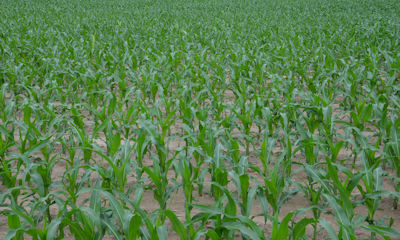
Starter fertilizer may be in your cross hairs if you typically apply it but are pressed to cut costs. The Indiana Certified Crop Advisers panel takes a close look at starter fertilizer. They recommend you study it carefully before making the decision on your farm.
The panel includes: Greg Kneubuhler, owner of G & K Concepts, Inc., Harlan; Jesse Grogan, agronomist for LG Seeds, Lafayette and Tom Stein, manager of the Boswell/Templeton branches for Ceres Solutions.

QUICK START: Agronomists who have tested starter fertilizer say it pays off in some years and not others. The problem is you never know which year it is in advance. Stands almost always look more uniform, especially in no-till, whether there is a pay-off in the end or not.
Question: I didn’t broadcast phosphorus and potassium last fall. My soil tests for P range from 25 to 75 pounds per acre, sometimes in the same field. I was going to put on P with starter, but my budget is even tighter than I expected. Would you leave out P? Would you apply P and not N? Would you leave out starter altogether? Something has to give on the budget somewhere.
Kneubuhler: Tight times call for desperate measures. The majority of the response comes from N in the starter, not P. I would have no reservations to leave P out of the starter if I had to trim my budget someplace. The only exception would be on the very low testing phosphorus fields. Where phosphate levels are low, you could see very good response to P in starter.
Related: When is starter fertilizer beneficial for corn?
Grogan: Starter fertilizer is important in cooler, wetter Indiana soils, especially in minimum and no-till environments. Starter fertilizer is important to achieve rapid and even emergence. If the budget is tight then a nitrogen starter should be used. The most value can be obtained from a liquid form like 28% UAN. Fertilizers with P included cost more per pound of available N. Test P levels might be deficient in a few areas, but most of the field could be at adequate to sufficient levels.
Stein: A soil test level for P of 25 pounds per acre is below the critical level, and will be a limiting factor for reaching optimal yield potential. If you need to adjust your budget, reallocate your input dollars where you can achieve the best return on investment. Apply phosphate starter to the low testing soils where it is needed the most.
Kneubuhler: You don’t have to feed the entire corn crop in the row starter. A lot of times, low use rates like 5 gallons of 10-34-0 can go a long way. I would not encourage anyone to leave out starter altogether. My top two components of starter are nitrogen and sulfur. Yield response far outweighs the cost in most cases. Visit with your agronomist to evaluate your P levels on each farm to determine whether to pull it out or not.
Related: Why this agronomist believes you should consider starter fertilizer for corn this year
Grogan: Remember to properly set your planter to achieve 1.5 to 2.0 inches of planting depth for proper root crown development. This is important for plants to have the ability for nutrient uptake throughout the growing season.
About the Author(s)
You May Also Like




